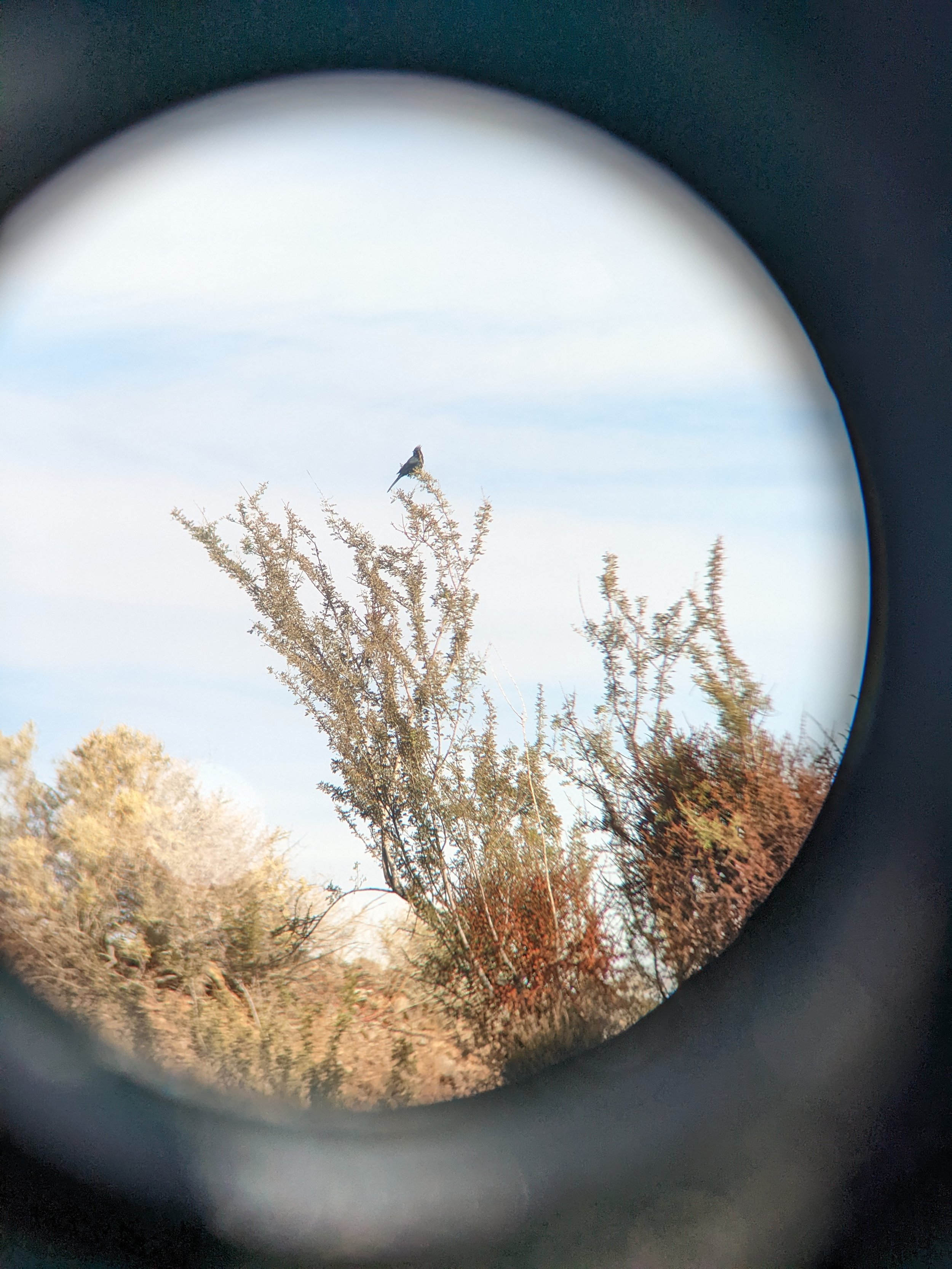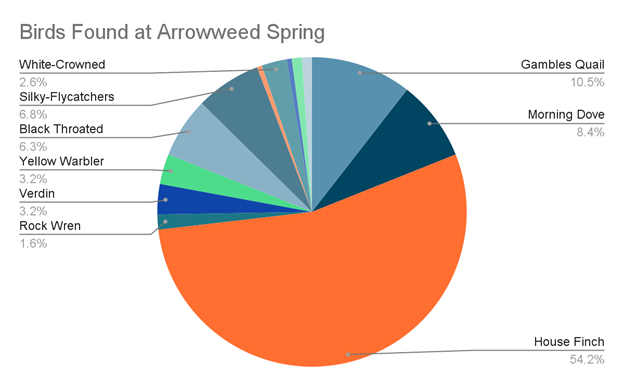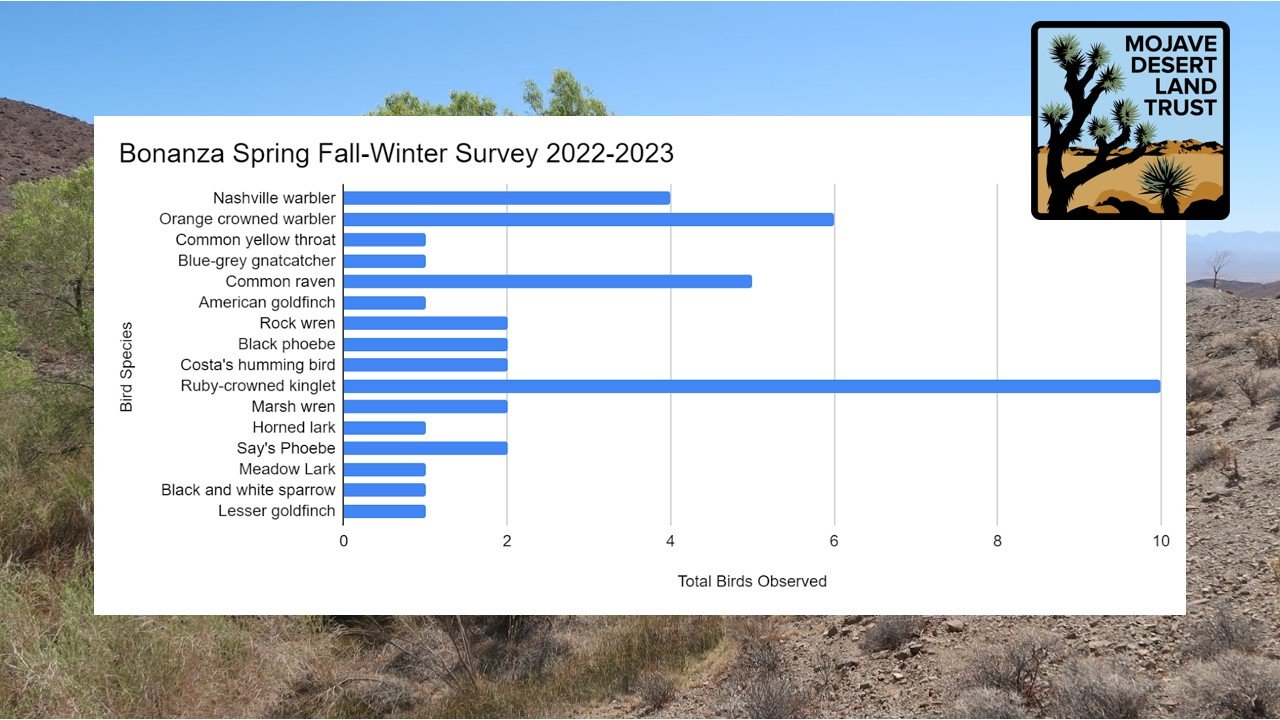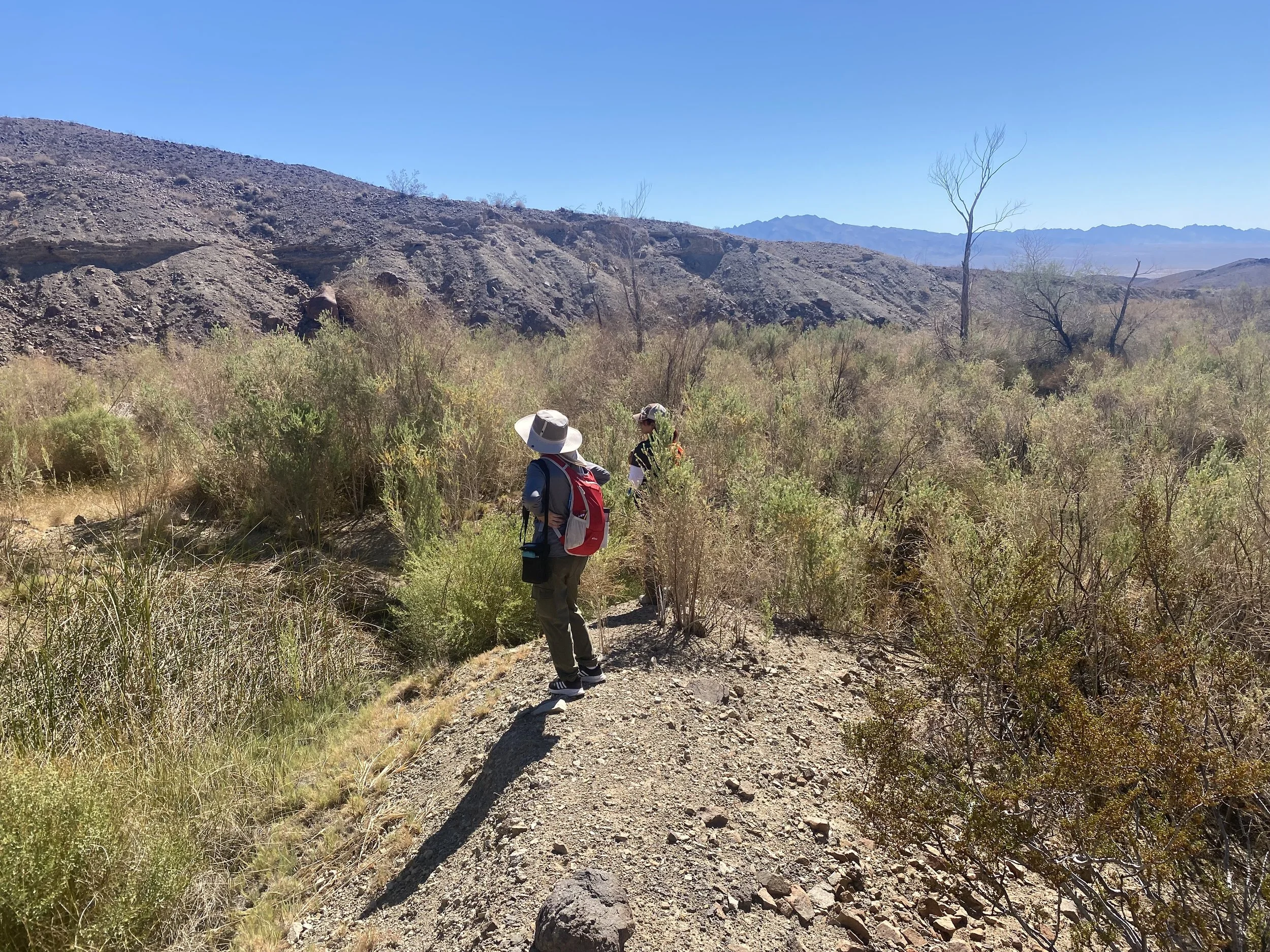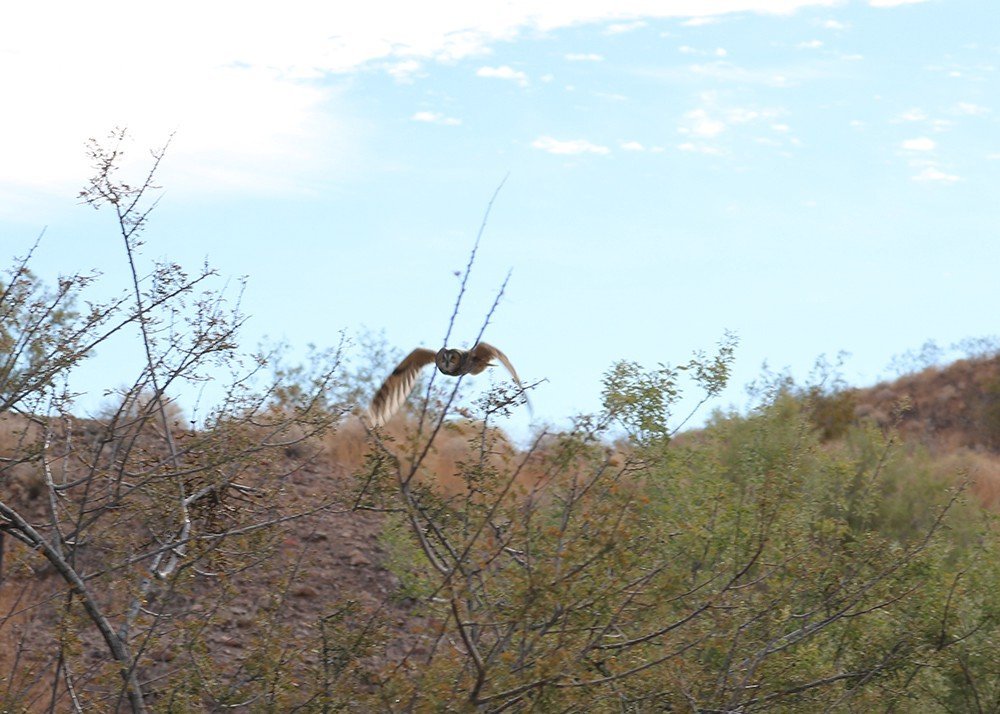Data provides rare insights into Mojave summer birds, bees
By Mary Cook-Rhyne, MDLT Education Manager
New data collected by interns offers rare insights into the summer bird populations at two oases in the Mojave Desert. Interns with the Women In Science Discovering Our Mojave program visited Arrowweed and Bonanza springs over a six-month period to study birds and bumble bees. The citizen science data collected by the interns is the first of its kind at these two oases.
There is little summer data on bird species at Bonanza Spring and no eBird data on bird species at Arrowweed Spring. Additionally, there is only historic data on bumble bees in the Mojave Desert, with no recent sightings. This new survey did not detect any bumble bees.
Both springs are located within Mojave Trails National Monument, which is administered by the Bureau of Land Management (BLM). The findings will give BLM a better idea of the species inhabiting some of the lushest areas of the Mojave Desert.
Arrowweed Spring in Mojave Trails National Monument
WISDOM is an MDLT internship program in collaboration with the Bureau of Land Management that seeks to help engage women from underserved communities studying science, technology, engineering and math (STEM).
Methodology
The springs were monitored by two different teams once monthly from August 2022 through February 2023.
Bird identification was conducted using binoculars and audio records. At several spots in each spring, interns observed every bird species within a 250-meter radius for ten minutes at each location. Those bird species either seen or heard were then uploaded to the community science website ebird.org. The community science program was created by the Cornell Lab of Ornithology to help ornithologists, conservationists, and bird enthusiasts identify and track species worldwide. According to the websites more than 100 million bird sightings are added to eBird each year.
Point surveys were used to determine the number of bumble bee species within the survey area and followed protocol set by the Xerces Society. Bumble bee sightings were to be uploaded to California Bumble Bee Atlas. California Bumble Bee Atlas is a community science project that aims to track and conserve the state’s native bumble bee population. Nationally, the American bumble bee population has declined by nearly 90% in the last 20 years, prompting efforts to learn more about protecting the species.
The WISDOM research project was identified by BLM as beneficial in helping create a land management plan for Mojave Trails National Monument. At 1.6 million acres, it is one of the largest national monuments in the contiguous 48 states.
Arrowweed Spring results
While there were over 20 different species observed, the most common was the House Finch (Haemorhous mexicanus), at 54.2% of overall bird sightings. Another common bird at the spring was the American Robin (Turdus migratorius) and a silky flycatcher, the Phainopepla.
Sandra Zepeda, Sara Poulain, and Evette Palacios carry out research at Arrowweed Spring, located near Needles.
Bonanza Spring results
During the fall season, neotropical migrants rest at migratory stopovers in Mojave Desert. The avian surveys conducted between September 2022-February 2023 indicate that songbirds (i.e., warblers) were the most abundant during migration season. During the fall months, a high number of migratory warbler species: Nashville warbler (Leiothlypis ruficapilla), orange crowned warbler (Vermivora celata), and common yellowthroat (Geothlypis trichas) were observed. Throughout the six-month survey, the common raven and the ruby-crowned kinglet were the most abundant. The common raven is a highly opportunistic bird that can thrive in a diverse range of habitats, so it was expected that interns would encounter this bird throughout the six-month survey.
Interns Gem Montes and Karina Murillo at Bonanza Spring
Bumble bee data
Unfortunately, there was no evidence of bumble bees at either spring.
There could be many reasons for the missing bumble bee presence in this area. One location (Arrowweed) was close to agricultural fields. The use of pesticides, along with the presence of honeybees, may be a deterring factor. There was also a lack of flowering plants in the area, due to the season of research or cold weather. Bees are more likely to be spotted in warmer weather.
Sometimes negative data like this can be the most important. Researchers can then ask why a species is absent, what can be done to make the site more suitable for their needs, and what other research needs to be carried out.
The Xerces Society notes that there are a number of threats facing bumble bees that may be leading to their decline, including disease, habitat destruction, pesticide use, invasive species, and climate change.
According to the Center for Biological Diversity, the “decline of the American bumble bee is part of a troubling downward trend in many of the 46 species of bumble bees and approximately 3,600 species of native bees in the United States that are needed to pollinate the full spectrum of wild plants”.
In 2021, the US Fish and Wildlife Service announced that the American bumble bee could warrant Endangered Species Act protection.
Observing life at one of the Mojave Desert’s vital springs
WISDOM interns Evette Palacios, Sara Poulain, and Sandra Zepeda spent six months observing birds and bumblebees at Arrowweed Spring in California. It was an experience that would connect them to this special habitat.
WISDOM provides women from underrepresented communities with opportunities to engage in stem fields by gaining experience and conducting scientific research. This internship fosters an environment of mentorship and career exploration by connecting female students with researchers and professionals, helping to develop the next generation of scientists. Find out more.
Get involved! You can help scientists and other enthusiasts understand more about the natural world. You can contribute to both of these citizen science projects. Join the California Bumble Bee Atlas mailing list and participate in data collection next year. Observing birds happens year-round and you can get involved in eBird today. All you need is the app and a love for bird watching. Try it, you’ll be in the good company with other avid bird watchers worldwide.

